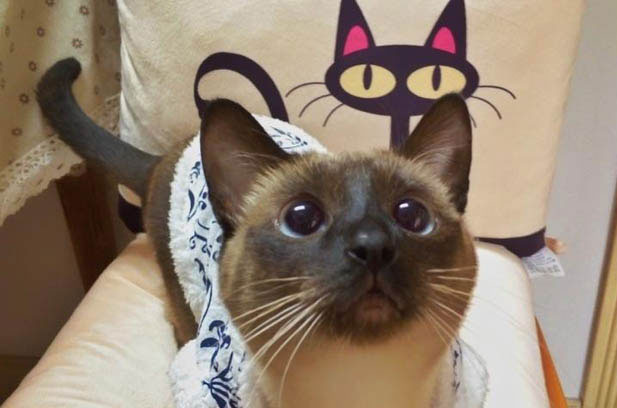As the owner of a Ragdoll cattery, my passion for this breed stems from their unique blend of beauty, temperament, and the rich history that defines them. Recent reflections on a video of Ann Baker, the creator of Ragdolls, showcasing her original cats reminded me why these felines have captured hearts for decades. While modern Ragdolls have evolved in appearance, their core spirit remains unchanged—a testament to the breed’s enduring legacy.
A Glimpse into History: The Origins of Ragdoll Temperament
Watching Ann Baker interact with her Ragdolls in the vintage video, one trait stands out: their remarkable calmness. Unlike many cats, the original Ragdolls allowed themselves to be cradled like babies, demonstrating a trust and docility that became the breed’s hallmark. Baker’s vision was to create a “puppy-like” cat, and decades later, that vision endures. Modern Ragdolls may have refined features, but their gentle disposition—often described as “dog-like”—remains a cornerstone of their appeal.

This temperament isn’t accidental. Baker selectively bred cats with laid-back personalities, prioritizing calmness over all else. The result is a breed that thrives on human interaction, tolerates handling with ease, and even adapts well to households with children or other pets. As a cattery owner, I’ve witnessed this firsthand: Ragdolls often greet visitors with curiosity, not fear, and accept grooming, vet visits, and baths with unusual patience.
Debunking Myths: Long Hair vs. Short Hair in Cat Care
A common question I hear is: “Do long-haired Ragdolls shed more than short-haired breeds?” The answer is both yes and no. While Ragdolls have a dense, luxurious coat that requires regular brushing (at least 2-3 times weekly to prevent matting), their shedding is surprisingly manageable compared to short-haired cats like Siamese—during non-shedding seasons.
The key difference lies in seasonal shedding. Short-haired cats often experience intense “blowing their coat” during spring and fall, leaving fur everywhere. Ragdolls, with their double coat, shed consistently year-round but in smaller clumps, provided they’re brushed regularly. For lazy owners, this might seem daunting, but the payoff is a coat that stays soft and mat-free with minimal effort. I often joke that a Ragdoll’s purrs make even grooming sessions feel like bonding time.
Size Matters: Understanding Ragdoll Anatomy
Another misconception is that all Ragdolls are “giant cats.” While traditional Ragdolls (often called “old-style” or “traditional line”) can reach impressive sizes—males often weigh 7-9 kg, females 5-7 kg—many modern breeders, including those in China, have embraced a “Persian-influenced” type. These modified Persian-line Ragdolls have rounder faces, larger eyes, and a more compact build, with males typically weighing 5-8 kg and females 4-6 kg.
This size variation isn’t a flaw but a reflection of breeding diversity. Persian-line Ragdolls appeal to those who prefer a slightly smaller, more “cuddly” frame, while traditional lines suit enthusiasts of the breed’s original, majestic stature. Regardless of line, all Ragdolls share a muscular, heavy-boned physique that gives them a sturdy yet graceful presence.
Personal Tales: Why I Champion Ragdolls
In my cattery, I’ve raised Ragdolls alongside other breeds like American Shorthairs and Scottish Folds. The contrast in temperament is striking. Ragdolls, even as kittens, exhibit a maturity that’s rare: they play gently, avoid destructive behavior, and seek out human company over solitude. One of my female Ragdolls, Lila, would sit patiently while I administered medication, purring even as I cleaned her ears—a level of trust I’ve rarely seen in other breeds.
Their “silly” side is equally endearing. Ragdolls often exhibit a lack of spatial awareness, tripping over their own paws or staring at leaves outside with comical intensity. This “big-hearted clumsiness” only deepens their charm, making them both elegant and utterly adorable.
A Word to Aspiring Owners
For those considering a Ragdoll, here’s what you need to know:
Grooming is non-negotiable. Invest in a quality slicker brush and schedule regular sessions. Your Ragdoll will thank you with fewer hairballs and a coat that glows.
They thrive on companionship. Ragdolls are not “lone wolf” cats. If you work long hours, consider adopting two or providing ample toys and climbing structures to keep them engaged.
Health matters. Choose a breeder who screens for HCM (hypertrophic cardiomyopathy) and PKD (polycystic kidney disease), common genetic issues in the breed. A reputable breeder will provide health certificates and lineage records.
The Lasting Legacy of a Beloved Breed
Ann Baker’s vision was to create a cat that brought joy through companionship, and today’s Ragdolls carry that torch. They’re not just pets; they’re gentle giants with hearts as big as their fur. Whether you’re drawn to their serene demeanor, striking appearance, or the quiet loyalty they offer, Ragdolls have a way of making every home feel warmer.
As I watch my own Ragdolls curl up together, their paws tangled and purrs synchronized, I’m reminded of why I fell in love with this breed. They’re a testament to the magic of intentional breeding—the kind that prioritizes soul over spectacle, and creates companions that feel like family.
Leave a Reply